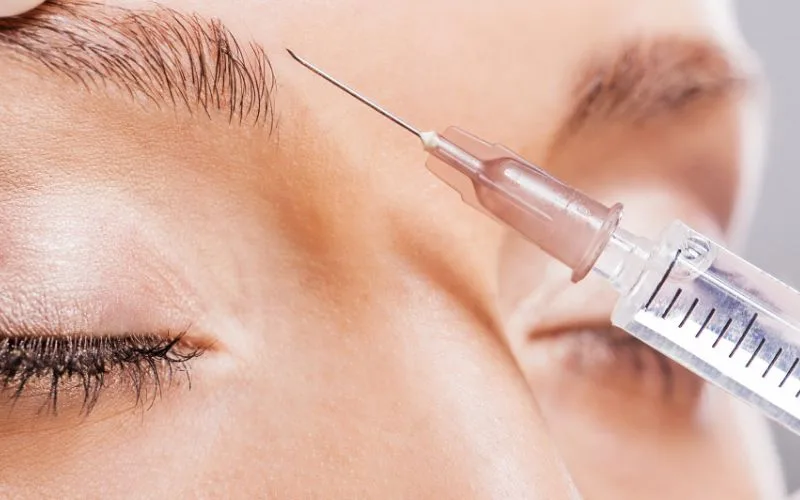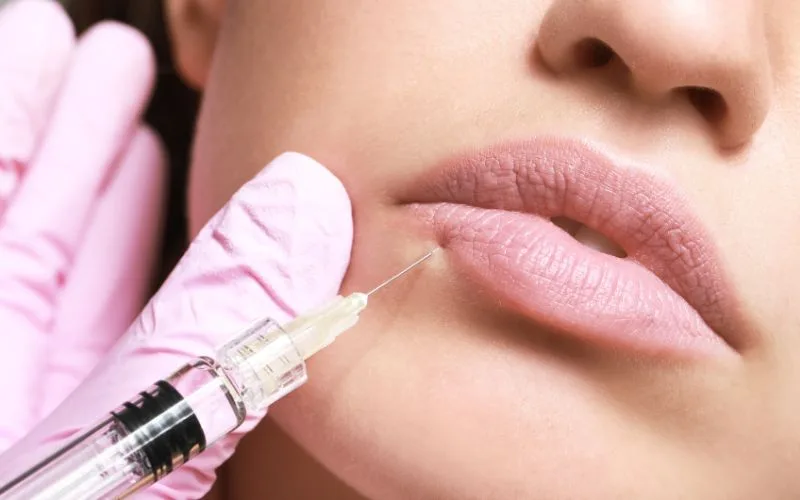If you are looking for a non-surgical way to get rid of aging signs and achieve a youthful appearance, BTX and fillers might be the best options for you. Let’s discuss them in more detail between BTX vs fillers to understand which is suitable for you.
With growing age, the appearance of wrinkles and saggy skin is a common phenomenon. This leads to an older and tired-looking appearance of the face. Saggy skin adds several years to a person’s appearance which may affect a person’s self-esteem greatly. Growing age should never mean declining confidence.
There are surgical options available for removing the signs of aging such as surgical facelift. However, going under the knife comes with their risks, downtime and high costs.

What Is BTX?
BTX is a short form for ‘botulinum toxin’. There are a few famous brands of botulinum toxin like BTX, Dysport, Xeomin etc.
This is a very trendy term nowadays because of its benefits over all other surgical options. BTX is also called a Botulinum toxin. It is a neurotoxic protein that is extracted from the bacteria Clostridium botulinum. It is safe for medical use nowadays after being intensively purified and diluted. It is popularly used to reduce wrinkles and fine lines. BTX became more commonly in use since the 1980s.
BTX reduces the release of neurotransmitters called acetylcholine from the axon endings of the nerves. This temporarily relaxes the muscles and reduces wrinkles. The Society of Plastic Surgeons stated that in 2018 more than 7.4 million procedures of botulinum toxin were done which was more than 845% from the year 2000. BTX became known to the masses after Bravo’s Real Housewives Reality TV show in 2006 where Lauri Waring Peterson and Vicki Gunavalson were seen using the BTX. Celebrities like Kim Kardashian, Sarah, Cindy Crawford, Kelly Ripa, Venessa Williams, etc. have been using BTX for a youthful appearance.
Other than removing signs of aging, BTX is also used in treating muscular dysfunction, treat excessive sweating(palm/armpit), face slimming, overactive bladder, etc. This makes BTX a very useful medicinal substance that benefits people in multiple ways. However it is very important to denote the right application of the BTX to avoid any complications. If you are looking for a non-surgical option to treat wrinkles and fine lines, BTX can be a prudent choice.
What Is Fillers?
Fillers first came into existence in the 1970s. During this period intensive efforts were being made and research was being done to invent collagen injectables from animal collagen-like bovine [extracted from cows]. The first dermal filler was named the Zyderm, which was affiliated as a facial filler in 1985. Till the 1990s, injections of artificial collagen were being used as fillers to restore volume loss on the face. In the 2000s hyaluronic acid (HA) filler was invented, which has better quality and more natural results. HA filler has been widely used in the aesthetic field until today because of its excellent safety profile, predictable outcome and dissolvable nature.
Other than HA filler, various substances are used as dermal fillers like calcium hydroxylapatite, polycapro-lactone, agarose gel and polymethyl-methacrylate microspheres [PMMA]. All these ingredients are chosen according to the specific purpose and region of the incorporation of the fillers.
How do fillers work on signs of aging?
Fillers can be inserted at various places under the skin. They enhance the volume and make the appearance of hollow regions look more plumper. Similarly, fillers tighens loosened skin to reduce of fine lines and wrinkles. Fillers are also used for correcting face asymmetry as well as correcting certain facial features to an extent. They can be used for reshaping the nose and chin, reduce dark eye circle, enhance lips volume, define jawlines, replace volume loss at cheeks/temple/forehead, etc. Fillers provide plumpness and restore volume which results in younger and more attractive facial features.
Difference between BTX and Fillers
When we compare BTX vs fillers, understand that both have their advantages and work efficiently towards reducing the signs of aging and providing better facial features. It also boosts the confidence of the person by providing them with youthful skin.
However, there are some key differences between BTX and fillers. BTX, or Botulinum Toxin, temporarily paralyzes muscles, preventing them from contracting and smoothing out wrinkles caused by repetitive facial movements. It is commonly used for dynamic wrinkles, such as crow’s feet and frown lines.
On the other hand, dermal fillers, typically made of hyaluronic acid, add volume to specific areas, filling in static wrinkles and restoring lost facial volume.
Which is Better BTX or fillers?
Fillers are effective for deeper lines, adding plumpness to areas like the cheeks and lips. While BTX targets muscle activity, fillers address volume loss, and the question of which is better between BTX or filler depends on the specific aesthetic goals and areas of concern for the individual seeking cosmetic enhancement.
Choosing Between Dermal Fillers vs BTX
As we grow older our skin loses its elasticity and tends to get saggy. This makes our appearance old and dull. If you don’t want to opt for surgical methods then, BTX and fillers make a good choice to treat the signs of aging as well as enhance your facial features. When considering between dermal filler vs BTX, you can consult our experienced doctors at Kowayo Aesthetic Clinic who can recommend which is more suitable for you.




